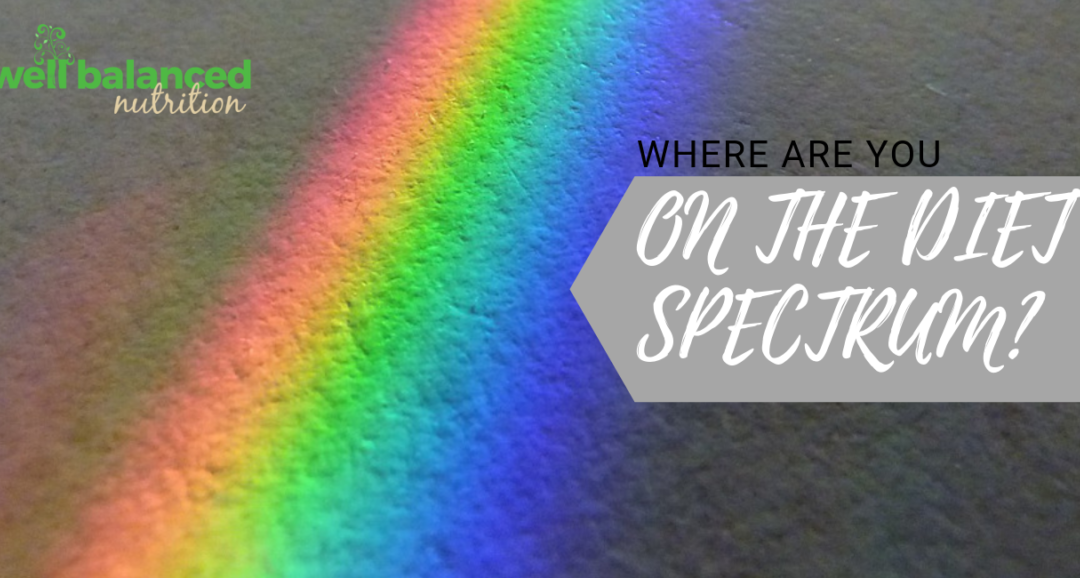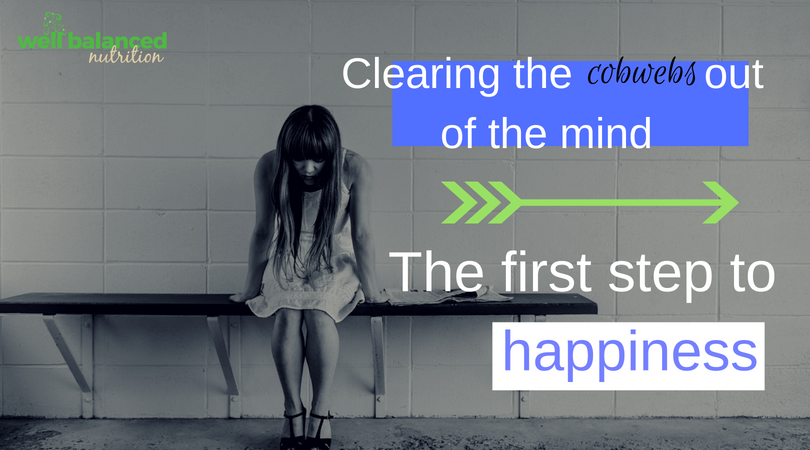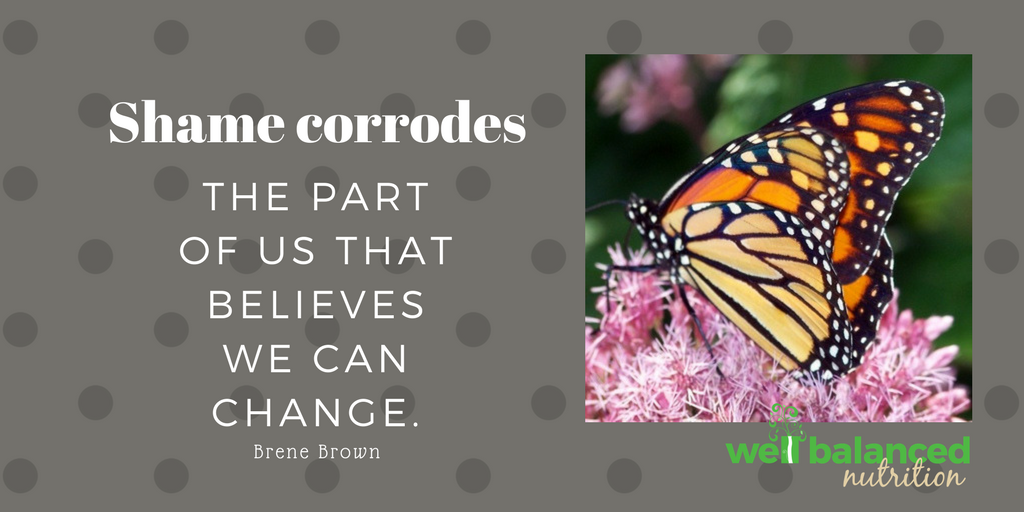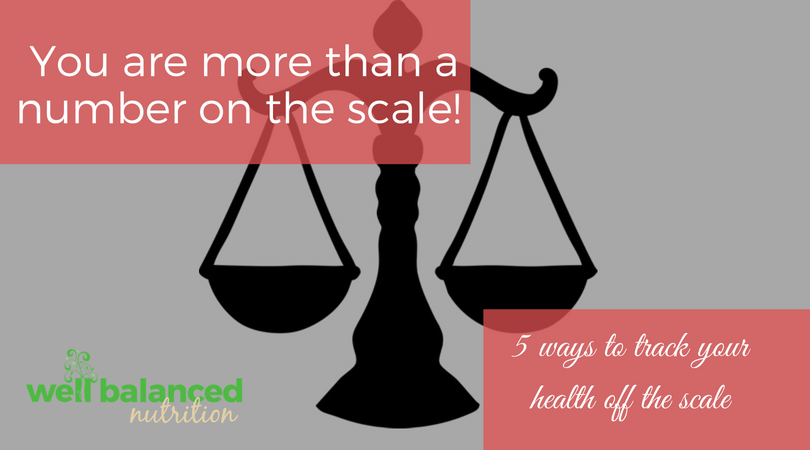
by Lucy | Dec 15, 2018 | Well Balanced Wisdom
If you’re wondering, “how can I be healthy through the holidays?” You came to the right place! Today we are bringing you three steps to staying healthy this holiday season.
Step 1: Decide how you want to feel now and on January 1st.
The holidays are full of opportunities to savor food, friends, and fun. Be in the moment and enjoy what matters to you. But don’t forget about your future self. Do you want to wake up the next day feeling bloated and tired? Do you want to wake up in the New Year feeling like you have to start a diet or detox program?
Instead, grab a journal or scrap piece of paper and decide how you want to feel through the holidays and on January 1st. Maybe you want to feel energized, healthy, joyful, confident, or empowered. By writing it down, you direct your inner compass to make intentional choices all season long. Think about what matters most to you this holiday season, savor and enjoy that and let the rest go. Sharing time with loved ones baking cookies may be a cherished activity, but the store-bought cookies at a work party with a lot less meaning may be easy to pass up if you think about it.
Step 2: Know your triggers!
These are the foods, situations, or a time of day that we tend to make our least healthy choices. Have you noticed you crave a sweet treat around 3 PM or 9 PM? That could be a trigger time of day. Or every time you walk by the break room, there seems to be another holiday goodie sitting out, and your brain says, “just one bite won’t hurt!“ These situations may be a trigger for you.
After you’ve determined what triggers your not-so-healthy choices, you can start to set yourself up for success by finding better afternoon or bedtime treats, such as these yummy gingerbread bites or a piece of fruit with nut butter. Also, consider the occasional permission slip. That’s the permission to enjoy that special treat as long as you do so mindfully and sitting at a table (versus hiding in the pantry eating cookies – yea, we’ve been there too!).
This may seem obvious, but it’s easy to get out of a healthy routine during the holiday season. That means continuing to eat regular meals and snacks if snacks are a part of your routine. Skipping meals increases our stress hormone levels, causes us to make poor food choices, and sometimes leads to overeating at the next meal.
Well-Balanced Day:
Breakfast: 1 small baked sweet potato + 2 scrambled eggs + 1/4 to 1/2 avocado
Lunch: 1 cup vegetable soup + 4-6 oz roasted chicken + 1 whole grain roll
Snack: a handful of cashews
Dinner: Spaghetti squash + sautéed onion and peppers + turkey sausage
Snack: 2 dates + 1 Tbsp. your favorite nutbutter
Food for thought:
Which step do you need to focus on to feel GREAT in the new year?
Need help getting started? We’re happy to chat and help you reach your health and wellness goals. Click here to talk to your friendly dietitians!

by Lucy | Nov 29, 2018 | Nutrition Questions Answered, Well Balanced Wisdom
You know how there’s a new diet or nutrition news article coming out every day?! It’s overwhelming and confusing for most people – especially those of us trying to be healthy and make better choices.
For many people, diet is a 4-letter word (literally and figuratively!) that makes one shutter and recoil. Here’s the thing, diet is simply the kind of foods a person eats habitually. It’s often shaped by our culture, environment, and upbringing, which may explain why some of us struggle to make healthier choices.
At Well Balanced Nutrition, Kristen and Lucy make it their mission to stay informed and up-to-date about the plethora of information on nutrition and wellness.
It’s important to remember that each human body, while similar in many ways, is also vastly different in our chemical makeup, including how we metabolize foods, how our bodies respond to stress, and so forth. It’s personal and each of us may require different strategies on the journey.
The Diet Spectrum
To bring more clarity to this conversation, we created a visual guide to help individuals figure out where they are on the spectrum.

On the left, we have our “highly structured” eaters. This includes individuals strictly following a diet, such as Whole30, Paleo, gluten-free, etc. This is not including the 2-week crash diets, but more long-term.
Next, on the far right we have the our “loosey goosey” eaters. On this end, there is almost no structure, boundaries or plan around what someone is eating each day.
In the middle, you find balance. This does not mean someone on a gluten-free diet for medical purposes needs to start eating wheat bread to be balanced. It’s simply a tool to check in and determine where you are on the spectrum.
Where are you on the Diet Spectrum?
Do you find yourself planning what you are going to eat each day before you get hungry? Or are you waiting to decide what you want in the moment day-by-day or meal-by-meal?
To become highly structured may be useful for setting new habits. Sometimes pressing the reset button with a highly structured diet plan can change how we think about or relate to food.
The question is, what do you need to change to create more balance in your diet? For some it may include more boundaries. Yet for others it may include a permission slip to eat off the plan every so often.
Eating balanced feels different for each of us. Letting go of the shame means embracing our slip ups and planning to do better next time.
Food for thought
As you go throughout your day or week, ask yourself is this choice Well Balanced? We find it most helpful to plan ahead! That way the decision is made before we get bombarded with too many choices.
Do you want to find more balance in your diet and lifestyle? Let’s chat!

by Lucy | Jul 8, 2018 | Well Balanced Wisdom
The other morning I was reading a great book by Kate Northrup titled Money: A Love Story. This is not your typical financial planning book. Instead, it’s an opportunity to take a mindful journey to understand and develop a healthier relationship with money. Northrup goes on to explain there are a lot of feelings and emotions around money and anybody that says otherwise is not being truthful with themselves.
Kristen and I would venture to say the same thing about food. When somebody is having issues making a change their diet, I have to tell them it’s rarely about the food. For instance, if you find yourself craving comfort foods, we may suggest that you are in need of more connection and/or love (or a good nights sleep!). We tend to seek comfort in the form of food if we feel isolated, disappointment, sad, overwhelmed, etc. Other healthier coping tools would include volunteering, calling a friend, playing with your furry or not-so-furry child or taking a walk.
As I continued reading and journaling, as prompted by Northrup, I suddenly had the urge to check my bank account. That is when I realized all the money for rent was still sitting in the bank account, which means I was at least two days late paying our rent. *palm to the face* Luckily, I was in full fledge observation mode and just started journaling my thoughts in that very moment. Do you know what I’ve discovered? I am a jerk face to myself! I was instantly telling myself that I’m an idiot and I should know better. So it was demoralizing and unproductive.
As a person who fancies herself as self-aware, it was incredibly surprising to have this bombardment of negative self talk flood my mind. Soon there were tears and I felt even more ridiculous for crying over $50. Seriously.
Fast forward to a few hours later and I’m walking through the woods.… Catching cobwebs. It got me thinking that these negative thought patterns are kind of like cobwebs in our minds. We’ve built them in without even realizing that they are making this journey to happy and healthy a lot less pleasant.
The first step
Today I’m encouraging each of you to just notice when you have a negative thought run through your mind. Anything such as, “you idiot!” Or “you should have…” Or “you know better. Why do you keep making the same mistake?!”

We now know that this is self shaming and as Brene Brown reminds us shame corrodes the part of the brain that believes that we can change. In short, shame does not help you do better. In fact, it will probably perpetuate the same negative behaviors. When we notice the negative thought patterns we can start to change them. I often teach friends and clients to try Cancel. Cancel. Cancel. when they first notice the negativity. Then create a helpful mantra or affirmation to replace the thoughts. Sometimes it can be as simple as repeating “release.” Or as Northrup mentions in her book, “I am pure, calm grace.” Important note: the affirmation needs to resonate with you. That means when you find an uplifting quote or phrase make sure it is speaking your truth. Do you believe and embody it?
Food for thought:
It always seems easier to help others recognize these negative thought patterns. Do you have a friend or loved one that you trust that could help you see where you might be allowing these negative thought patterns and cobwebs of the mind to hold you back?
Kristen and I are happy to help you clear the way and make a more enjoyable journey into your happy and healthy – let us know how we can help?


by Lucy | May 18, 2018 | Motivational Mondays
Kara showed up in my office feeling frustrated and confused, she exclaims “just when I think I’m doing well and finally losing weight, I step on the scale and see the same number for the third month in a row!“ Kara previously lost weight by eliminating most carbohydrates – motivated to look fabulous in her wedding dress – dropped 30+ lbs only to regain the weight and more. This time, Kara is taking a different approach by eating well-balanced and including 5 workouts each week. She discovered a unique gym near home that provides guided exercise with the statistical feedback through her Fitbit and heart rate monitor, which helped increase her motivation and engagement. However, she has found the process is much slower this time around.
Kara’s story is not uncommon and may sound familiar to some of you. During our conversation, Kara explains she hasn’t been to the doctor for years and worries her weight may have a negative impact on her health. She asked frankly, “can you be healthy and still carry extra weight at the same time?” The short answer, YES.
When you go to the doctor, the nurse checks your weight, height, blood pressure, temperature, pulse, etc. Often, the doctor orders lab test to get additional information about your overall health and well-being. If you were to go to the doctor and they simply checked your weight, then the doctor comes in and prescribes diabetes medications, I imagine you would be suspicious and skeptical about this diagnosis. Our body mass index – BMI – is simply one clinical indicator of health. This number does not take into account your muscle mass, bone density, or genetic background, all of which have significant impact on your health.
At Well Balanced Nutrition, we believe in health at every size. This is not a free pass to go eat a dozen donuts and sit on the sofa all weekend! Health is sum of your lifestyle, diet, and behavior choices. Checking your weight regularly, whether that means every day, once a week, or once a month is one way to track your progress. However, there are many other means of tracking.
How do you know you’re on track?
- How do your clothes fit? Have you found yourself exclusively reaching for the yoga pants, elastic waist, and loose-fitting clothes? That might be a sign that it’s time to pay closer attention to what you are eating and/or drinking. Prior to starting a workout program, you can also take measurements around your arms, waist, hips, and thighs. That way, in case you gain muscle and do not lose weight, you will likely still lose inches.
- What are you eating? I know firsthand, how someone has eaten for the last 3 days is how they have “always eaten.“ We humans have terrible memories for the details of what we consumed lately unless there is some means of tracking. That might be an app, paper food journal, or picture journal.
- How is your mood? Personally, when I don’t eat well, get insufficient sleep, or less physical activity I feel awful. I’m a little extra irritable, moody, and generally less fun to be around – just ask my boyfriend! Pay attention to your mood and ask yourself “WHY am I feeling the way I feel?” Has something in your routine changed?
- How are you sleeping? Sleep is directly impacted by our day-to-day choices. Some people notice they sleep poorly if they eat simple carbohydrates, especially refined sugar, after 7 PM. Others report sleeping poorly if they have too much alcohol to drink or not enough water.
- What is your energy level? It could be low due to an extra stressful week, catching up from vacation, or having a sick child at home. Our energy level is all highly impacted by what we eat and how we spend our free time.
Food for thought:
If health is not determined by our weight, why do we keep letting that darn number on the scale tell us about our self-worth and well being? You are more than a number! What other means of tracking helps you know you are Well Balanced?


by Lucy | Apr 24, 2018 | Well Balanced Wisdom
I never played sports; therefore, the coaching concept is new to me. At Grace Church, pastor Kendrick recently taught us about people who struggle without improvement versus people who grow and develop in the midst of their struggles. He put it bluntly, when we are in performance mentality and seeking the approval or acceptance of others, we become prideful. A performance mentality is sometimes rooted in insecurity because the ego doesn’t like to be wrong or embarrassed. When Michael Jordan got cut from the high school varsity basketball team as a sophomore he was devastated; however, instead of throwing in the towel on his dreams he hit the courts and practiced, practiced, and practiced some more.
Some of our clients assume Kristen and I will give them a meal plan, a few recipes, and maybe a cheer to keep them on track. Instead, they get a coach – someone to listen, give feedback, and provide a toolbox of skills to live a happy and healthy lifestyle.
In order to grow and get better, here are five steps to becoming more coachable and achieve your ultimate health and well-being.
5 steps to achieve your goals
- It always starts with a vision. Sports enthusiast and professionals spend time envisioning themselves succeeding. For instance, when a golfer steps up to the tee, she will envision the ball going in the direction and landing exactly where she wants it to be. If she steps up to the ball and starts thinking about something else or looking into the sandpit, that’s where the ball goes. What is the vision of your healthiest self look like? What are your habits? How do you feel?
- Next, comes skills development. If you’ve never hit a golf ball, it’s unlikely that it will go very far or exactly in the direction you were hoping the first time you play. Instead, you start by learning which golf club to use, the appropriate grip, the right stance, and the swing. Same idea if you’re unfamiliar with how to cook and assemble Well Balanced meals. First, we need to start with what is well-balanced? Then how plan meals to meet your nutritional needs.
- Put it into action! Now we apply our new skills. On the golf course that may mean going to hit a bucket of balls at the range. For someone looking to become healthier, it could be planning a week of Well Balanced dinners for the family.
- Grow. It’s OK to fall down, it’s OK to not succeed. Each time we “fail,” is a chance to learn how not to do it next time. So what if you swung the golf club and missed the ball by inches? Sounds like the time to laugh it off and try again. And if you had cereal for dinner last night (again), perhaps it’s a good chance to stock up on a few of our favorite Quick Fix Meal ideas.
- Lastly, we need to be humble! That means if you keep trying and it’s not working it’s time to ask for help. It could be time to hire an instructor and get on the greens for guided practice or several. And if you’ve tried diet after diet with the same results we invite you to apply for a Breakthrough the Diet Mentality call.
Food for thought
Most of us have two voices that sometimes go to battle in our heads… “I got this!” and “why bother?“ That second voice is just our ego trying to protect itself. Instead, listen to the helping and encouraging thoughts – create a vision, practice the healthy habits, and get back on if you fall off the wagon. And if you need some help in the kitchen, you know where to find us: contact Lucy & Kristen.











